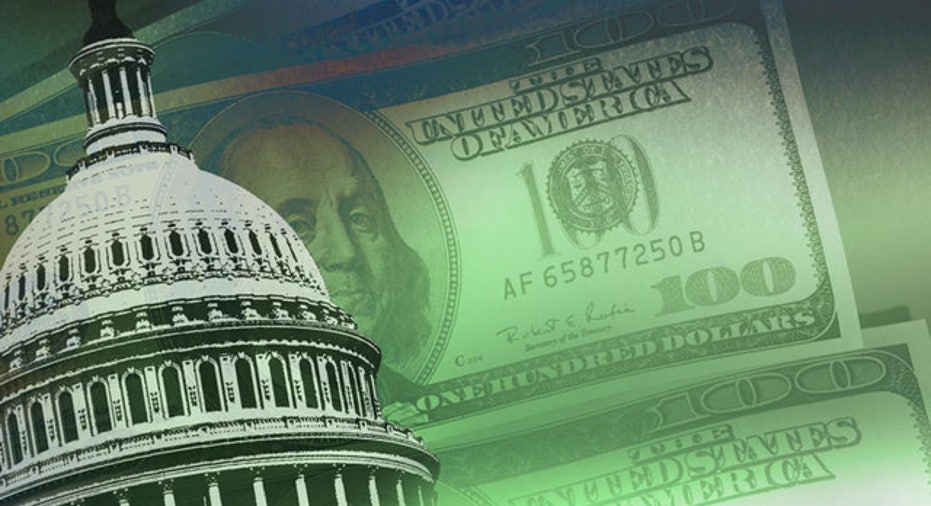Dysfunction a Recipe for Credit Downgrades

A year and a half ago, ratings firm Standard & Poor’s cited political dysfunction in Washington, D.C., as a primary reason for downgrading U.S. credit.
By just about any measure the dysfunction in Washington has only grown worse since then.
President Obama won re-election in November in part by pledging to raise taxes on the wealthiest Americans to help plug the $16 trillion U.S. deficit. Meanwhile, there are enough Congressional Republicans who have vowed not to raise any taxes on anyone to nullify any compromise Obama might reach with GOP leaders seeking to avoid the looming fiscal cliff.
The fiscal cliff deadline has been approaching in one form or another since August of 2011. Yet the president and Congressional leaders seemed no closer Thursday -- just four days ahead of the deadline -- to reaching a compromise than they were more than 16 months ago.
Economists have said the projected $600 billion economic impact of the fiscal cliff’s mandated tax hikes and budget cuts would almost certainly push the U.S. back into recession.
Then on Wednesday, Secretary Treasury Timothy Geithner said the U.S. will hit its debt ceiling on Dec. 31, quickly raising the specter of a U.S. default and reviving the debate that led S&P to issue its historic ratings cut in August 2011.
None of these threats has altered the political landscape.
So if political dysfunction and its attendant partisan gridlock are still the criteria it’s hard to see how the U.S. can avoid further downgrades.
Fitch Ratings said earlier this month it might follow in S&P’s footsteps if politicians fail to reach a deal by Jan. 1 and allow the U.S. to fall over the fiscal cliff. “Failure to avoid the fiscal cliff … would exacerbate rather than diminish the uncertainty over fiscal policy, and tip the U.S. into an avoidable and unnecessary recession,” Fitch wrote in a report.
Moody’s Investors Service, while acknowledging the possibility of an eventual downgrade, has taken a more wait-and-see attitude.
What’s interesting about the likelihood of additional ratings cuts is that it might not be actual fallout from the fiscal cliff that leads to the downgrades. Rather it will again be our elected leaders’ repeated inability to effectively grapple with the country’s long-term economic troubles that causes the ratings firms to conclude that the U.S. is a lousy credit risk.
Ratings Firms Might Favor Some Aspects of the Cliff
Stan Collender, a partner at Washington, D.C.-based Qorvis Communications and a former staffer to both the House and Senate Budget Committees, recalled that S&P specifically questioned “the effectiveness, stability, and predictability of American policymaking and political institutions” when downgrading U.S. credit in August 2011.
Given the status of the current negotiations the ratings firms can hardly conclude that the level of cooperation has improved in Washington. Both sides seem willing to risk further downgrades (in addition to another recession) to further their respective political agendas.
At the same time, Collender suggested that the ratings firms might look favorably on some aspects of the fiscal cliff.
“The government going over the cliff and keeping the tax increases and spending cuts in place through the year will mean a 2013 deficit that is $500 billion to $600 billion less than what it was in 2012. That reduction in the deficit and, therefore, in the amount the United States will have to borrow, should be something the agencies applaud,” Collender said.
What’s more, the mandated spending cuts, known as sequestration, were adopted as part of a budget deal cut by Obama and Congressional leaders last August. Therefore, if the cuts actually go into effect the ratings agencies might take that as a sign that Washington can create and stick to a policy that requires the federal government to spend less money.
“A sequester that goes into effect as promised would certainly demonstrate that stability and predictability had improved,” Collender said.
Perhaps the worst thing that could happen is a last-minute deal that temporarily maintains current spending levels and tax rates and once again puts off any hard decisions on tax and entitlement reform. In other words, a Band-Aid that provides political cover for the politicians while pushing the problem further down the road.
Such a deal would almost certainly prompt additional ratings cuts because it would confirm suspicions that the White House and Congress are incapable of putting aside their political differences in an effort to solve the nation’s long-term fiscal problems.
Ultimately, the threat of further ratings downgrades hasn’t seemed to have had much effect on the fiscal cliff negotiations. The impact of S&P’s unprecedented downgrade in 2011 was temporary, resulting in a brief stock market selloff. Bond markets barely noticed. Indeed, bond investors looking around the world for safer investments apparently concluded that the U.S. remains a safe bet regardless of the opinions of the three main ratings firms.
Those opinions have been justifiably called into question in the wake of the financial crisis that came about as a result of trillions of dollars of questionable debt, much of it tied to dubious mortgages, which received the highest possible ratings from none other than S&P, Fitch and Moody’s.



















